
Photo: courtesy of, and copyrighted by, Gene White, pmimages@earthlink.net
Count on ants to provide continuous revenue for pest management professionals (PMPs), regardless of location and climate.
“Year after year, ant work continues to grow bigger,” says David Moore, BCE, manager of technical services for Dodson Pest Control, Lynchburg, Va. “It is one of the main reasons why people get recurring pest service.”
Consistently ranked No. 1 as the top revenue-generating pest in Pest Management Professional’s (PMP’s) annual State of the Industry report, ants can be a boon for business for PMPs who successfully identify and treat them.
“For PMPs who want to increase their recurring revenue, ant control services are a no-brainer — provided you are willing to provide the proper training for your team members,” says Joseph Edwards, president of North Fulton Pest Solutions, Alpharetta, Ga.
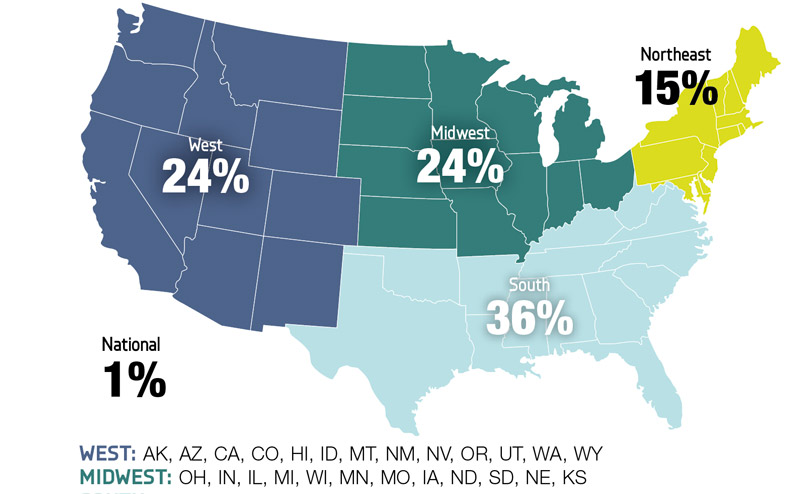
ILLUSTRATION: DENYS/ISTOCK / GETTY IMAGES PLUS/GETTY IMAGES; SOURCE: PMP ONLINE SURVEY CONDUCTED MARCH-APRIL 2020
REDUCING CALLBACKS
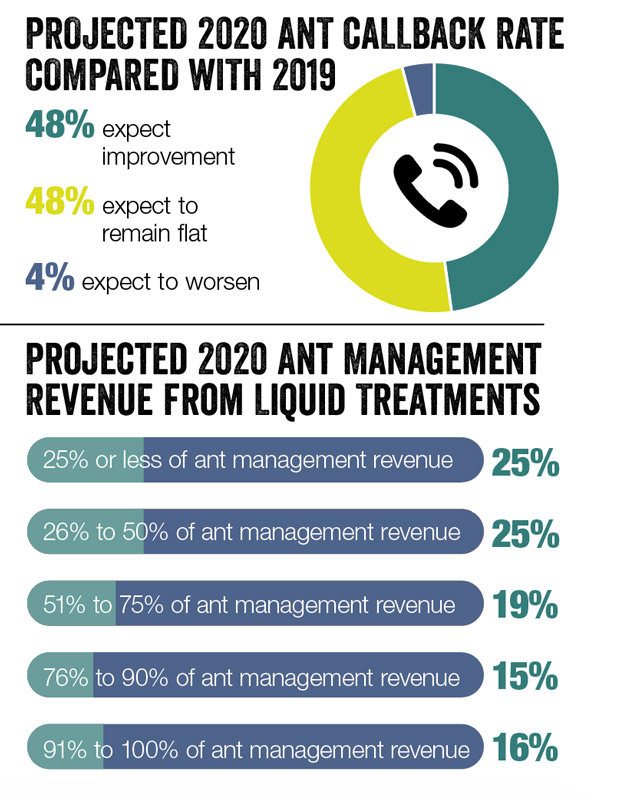
ILLUSTRATION: -VICTOR-/DIGITALVISION VECTORS / GETTY IMAGES; SOURCE: PMP ONLINE SURVEY CONDUCTED MARCH-APRIL 2020
Training helps ensure technicians can positively identify the species they are dealing with, which is critical to determining an effective treatment method and reducing callbacks.
PMP’s 2020 Ant Management Survey shows just 4 percent of the PMPs who responded expect callbacks this year to be worse than callbacks last year.
The steps PMPs take to reduce callbacks are working, as the survey also shows 96 percent
of respondents report a callback percentage of 25 percent or less for ant control treatments.
Methods that help keep callbacks in check range from frequent follow-ups with customers to reliable identification tools to extensive technician training.
Paul Wikoff, owner of Total Care Pest Management in Emporia, Kan., says office staff check in with customers shortly after each ant control service. They follow up with a phone call, and if there’s an issue, a technician goes back at no charge.

Paul Wikoff
“If all is well, then we lead the conversation through some positive reinforcement and leave on a high mark,” he says. “Since we started the follow-up calls, our referrals and conversions to annual services have skyrocketed.”
Training technicians how to properly identify the ants at a customer’s location is well worth the effort, according to Edwards.
“We go to great lengths to provide our technicians with thorough training that includes the correct identification of the ant species and their biology, which in turn allows them to have a better understanding of the ant’s foraging habits — along with feeding, nesting and harborage preferences — so that we are confident we are implementing the right treatment strategies,” he explains.
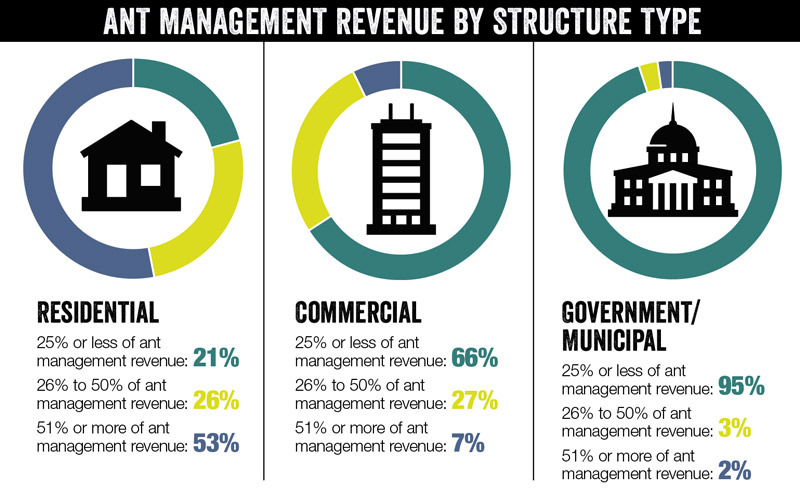
ILLUSTRATION: APPLEUZR/DIGITALVISION VECTORS / GETTY IMAGES; SOURCE: PMP ONLINE SURVEY CONDUCTED MARCH-APRIL 2020
IDENTIFYING SPECIES
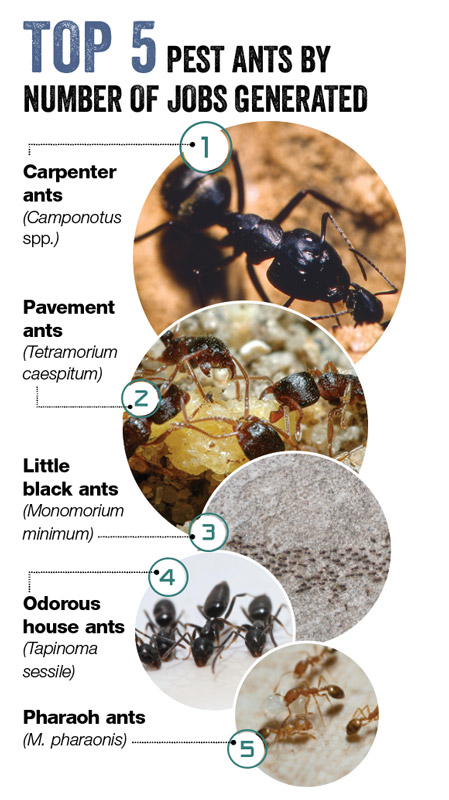
SOURCE: PMP ONLINE SURVEY CONDUCTED MARCH-APRIL 2020
With more than 700 species of ants in the United States, according to the National Pest Management Association, technicians who know the species they are dealing with are well on their way to gaining control.
“Proper ant identification is critical to obtain the appropriate results, which ultimately makes for a satisfied customer,” Edwards adds.
PMP’s exclusive survey reveals pavement ants (Tetramorium caespitum) are gaining traction as the species responsible for both number of jobs generated and callbacks. This year, they moved up two spots since last year’s survey. As with any pest, the species dictates the treatment method.

Darrell Seelinger
“Identifying specific species allows for the proper treatment of ants, and correct products and procedures for eradication and/or control,” says Darrell Seelinger, owner of Oakland Pest Control in Macomb, Mich.
With ants, use of the wrong products and treatment protocols can make an infestation worse. It also can prolong the time it takes to gain control.
“Proper identification of the ant allows you to know its habits,” Moore says. “If you know their habits, you can eliminate the issue faster.”
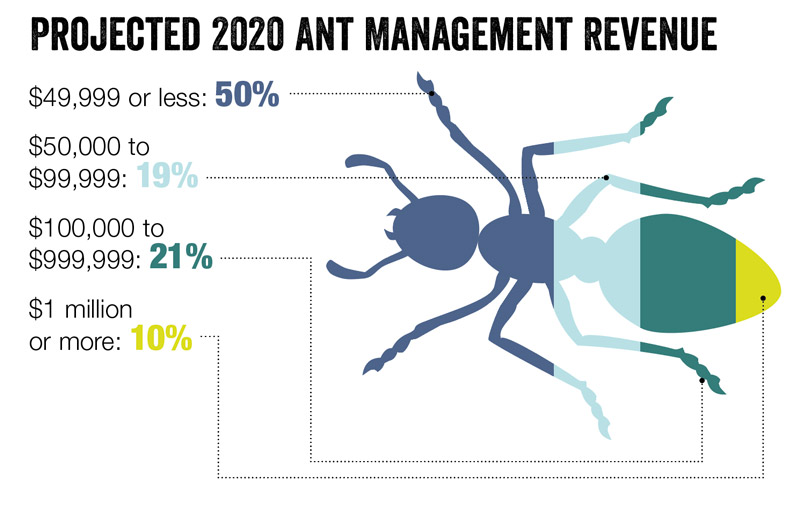
ILLUSTRATION: SCHLEGELFOTOS/ ISTOCK / GETTY IMAGES PLUS/GETTY IMAGES; SOURCE: PMP ONLINE SURVEY CONDUCTED MARCH-APRIL 2020
SATISFYING CUSTOMERS
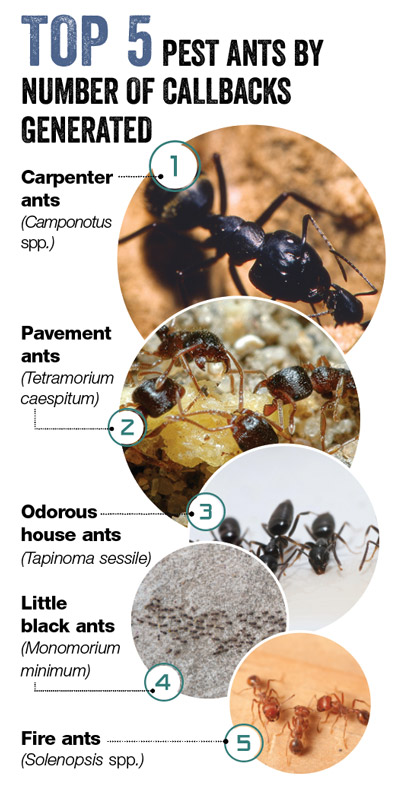
SOURCE: PMP ONLINE SURVEY CONDUCTED MARCH-APRIL 2020
PMPs who spend time with customers to learn where and when they have seen ants, and demonstrate their expertise by identifying the pest, can help put customers at ease, says Total Care Pest Management’s Wikoff.
“It gives a sense of calm to customers; they know they have called someone who knows what they are doing,” he says. “In addition, and probably more importantly, it allows the technician to customize the treatment modality to the species of ant.”
These days, PMPs can more easily identify ants out in the field, thanks to smartphone apps that allow them to view such distinguishing features as color, nodes, wings, antennae and habits.

David Moore
It’s how Edwards equips his technicians, although his staff entomologist can help make an accurate identification if any doubts remain.
For others, like Moore, a jeweler’s loupe and a guidebook can help identify ant species technicians don’t encounter every day.
“You can do simple things like squish them and use the smell to determine species like odorous house ants or citronella ants,” he adds.
A combination of new and old technology allows Wikoff’s technicians to positively identify ants; they use a credit card-sized magnifying glass along with an app.
CUSTOMER COMPLIANCE

Joseph Edwards
When it’s time to determine a treatment option, get the customer involved.
“Learn how to guide the customer with structural, cultural and behavioral changes,” says Moore. “These can make a big difference.”
Because gaining control may take time, depending on the infestation and treatment method, it’s critical to communicate your expectations.
“Educating the customer upfront with step-by-step protocols allows us to achieve results in a timeframe within our customer’s expectations,” Edwards says. “When we achieve results the customer may have not experienced with a previous company, this builds trust that results in a relationship with the customer that can lead to eventually providing services for all of their pest and wildlife control needs.”
A satisfied customer can be your best advocate. Gaining control of an ant infestation often leads to word-of-mouth referrals to family, friends and neighbors.
“It also can help grow your commercial work if you take care of the decision maker’s house,” Moore notes.
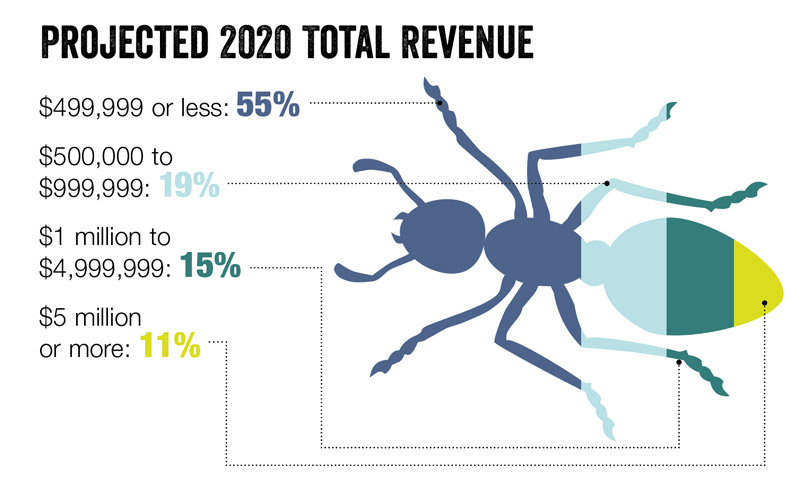
ILLUSTRATION: SCHLEGELFOTOS/ ISTOCK / GETTY IMAGES PLUS/GETTY IMAGES; SOURCE: PMP ONLINE SURVEY CONDUCTED MARCH-APRIL 2020
WEATHERING CHANGES
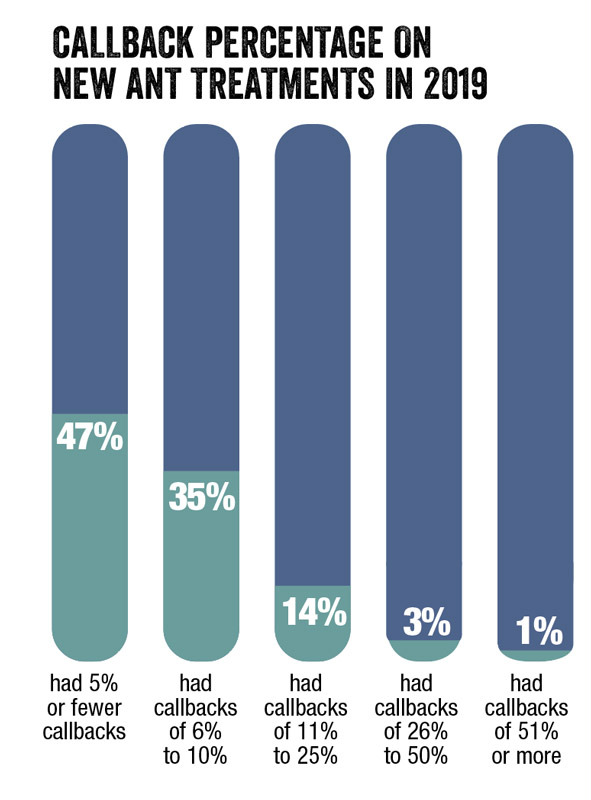
SOURCE: PMP ONLINE SURVEY CONDUCTED MARCH-APRIL 2020
Weather conditions have done little to reduce pest pressure, and customers are quick to call for help when pests appear indoors.
“In general, the first call of the spring season is regarding ants,” Seelinger says. “The level of activity is based on how wet, dry, cold or hot the season begins.”
For more than 10 years, ants have been Edwards’ No. 1 general household pest problem, and he continues to experience a tremendous increase in ant service calls.
“Ants have proven to be successful in adapting to weather conditions, resulting in a continued increase in ant pressure,” he says. “Ant control, by far, has been the fastest growing segment of our company.”
As for Wikoff, rainy spring weather the past two years have kept him busy. Calls for ant control have “gone through the roof,” he says. But he developed a strategy that results in satisfied customers.
“So many people call with ‘ants in my mailbox’ or ‘ants all over my deck’ that we dedicate a week just before ant season really gets going to service all our contracted customers with a preventive treatment,” he says.
Wikoff points out that ant control is best learned by doing, and says the lessons from his six-legged “teachers” have served him well: “You’ve got to slow down and look at the situation really close, because each ant job is different than the one before.”
The post Attaining ant control appeared first on Pest Management Professional.
No comments:
Post a Comment